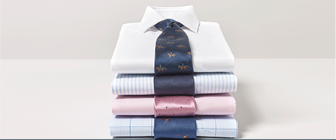Anne Newmark meets Jeffrey Doltis in his office just off London’s Savile Row to talk about his career in shirt-making and what it is that distinguishes a Savile Row Company shirt.
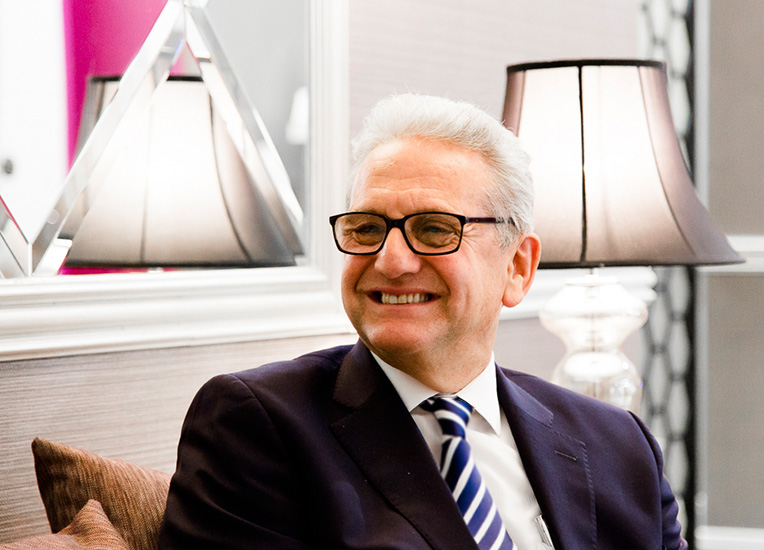
So how did it all begin, this passion for men’s shirts?
My father founded the tailoring business back in 1938. I joined as a young man of 18 and almost immediately went across to our factory in Northern Ireland where I spent the next 15 years ‘learning my trade’ and I hope – how to become the eventual head of the company!
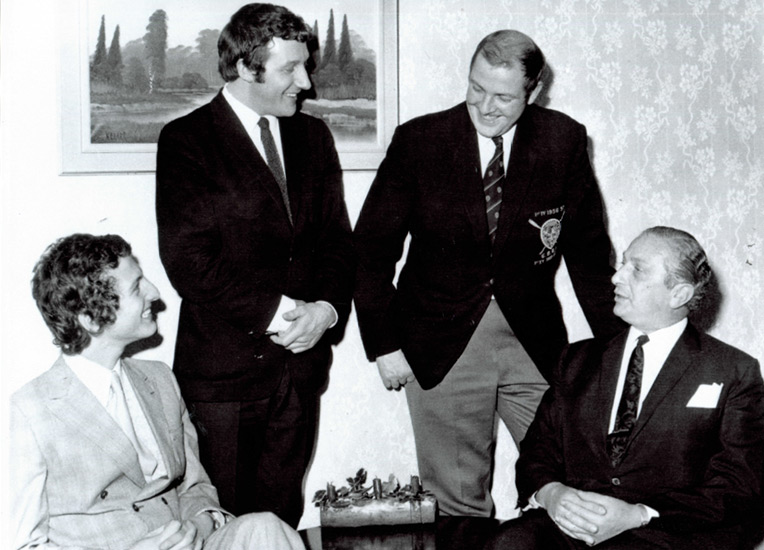 1968 - Jeffrey Doltis (bottom left) Jerry Doltis - Jeffrey's father (bottom right)
1968 - Jeffrey Doltis (bottom left) Jerry Doltis - Jeffrey's father (bottom right)
There’s a real skill to making a first class shirt and this was in 1968 so very little was automated. The women – the workforce was probably about 95% female – did almost everything by hand. I worked alongside them and after 2 years of fantastic training – I could make a shirt that was every bit as good, if not better than our seamstresses!

There’s a long history of shirt making in Ireland so after our London factory was blitzed during the war – we moved our production across to Belfast. Our staff were made of stern stuff as we were bombed a second time by the IRA. Surviving that, we opened a new factory in Castledawson.Our head office, though, is just behind our bespoke store on Savile Row. The tailoring ethos, the skills found only on ‘the Row’ were a guiding influence in the way we did things.
There were – well, there still are, for that matter – thirty-five steps involved in making a shirt. Each seamstess had their own particular step to do, their area of expertise. It could take up to twenty-six weeks training for them to perfect the most difficult step and get fully up to speed. During those first years, I was taught in every single one of the thirty-five steps.
And that was it. I was hooked.
Don’t get me wrong. I care a lot about everything we do. We make suits, ties, knits, trousers and all sorts of menswear. And I’m very much involved with it all. But formal shirts, work shirts, are my big passion.
I’ve been making them for 47 years and wearing them every day. And I love them!
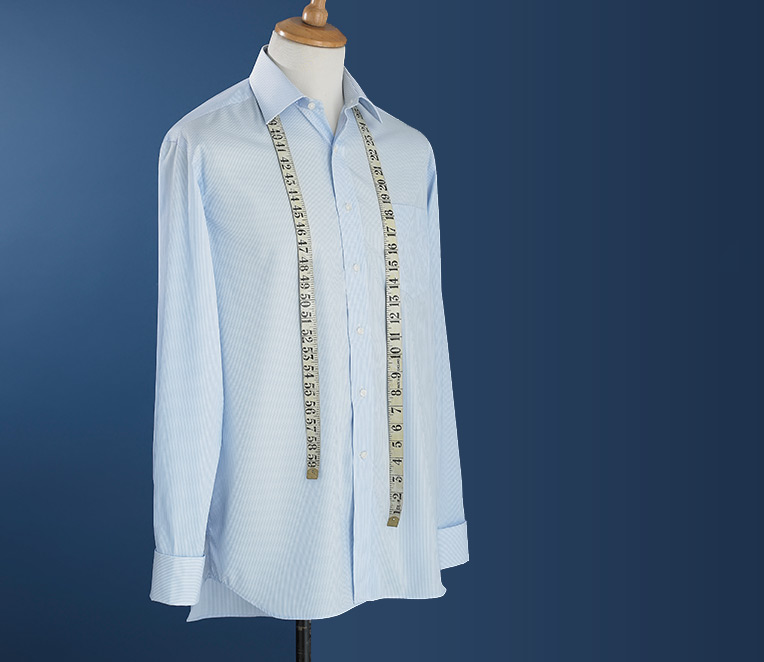
Thirty-five steps, twenty six weeks? That’s amazing!
Yes, that’s right. Making the sleeve guard was probably the most difficult. The most fiddly.
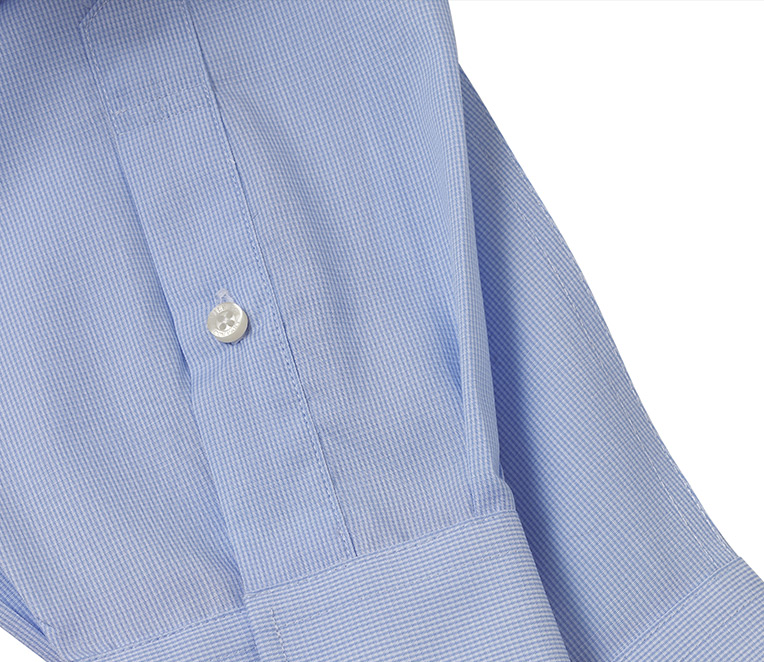
But in the collar alone there are seven steps.
And I’m very fussy about collars.
Something I’ve designed, and which is unique to us, is our special collar ‘roll’. This is where the collar stand (also referred to as the ‘band’) meets the collar. Ours are uniquely, softly, shaped to accommodate your tie more comfortably. Nobody wants their chin rubbed! With my special roll, the collars sit better when you wear your shirt open-necked too.
Another thing that’s unique to our collars is that they have two sets of stiffeners. Collar bones. One integral and one removable.
The integral one goes right into the point so that the collar is neat, holds its shape and never curls. We put that in before the collar is top-stitched.
And the removable one is there so you have the option to effect a more formal, more precise look if you want to. Other brands tend to go for one or the other.

What else did you learn in those first years on the factory floor?
Oooh! A lot! I wasn’t just there to learn how to make shirts. I had to learn all about the shirting fabric, the fabric ‘technology’ for want of a better word. And I had to get my head around other challenges - management, organisation, finance and all.
My 15 years in Northern Ireland stood me in such good stead to take over the mantle of the business. From personal experience – I know what makes a top-notch product and I’ll never settle for anything less.
So what does a shirt have to have today to pass the Jeffrey test and become part of a new season’s collection?
Hmmm, big question that.
Most important of all is the quality of the fabric. Obviously it’s got to look great. And it’s got to be soft. Softer than all the other shirts on the market! And it’s also got to be fantastically robust so it will survive endless wearing and washing before the shirt loses its looks.
Yes, I know that means that our customers won’t be coming back for new shirts as often as they would be if our shirts wore out quicker. But I pride myself on durability and I’m always delighted when customers tell me they’ve had our shirts for several years! So it’s a price I’m prepared to pay.
And quality, robustness and durability are all about the density of the weave, the number of threads
The denser the weave, the greater the clarity of the design and the more pleasing its look. I want all our shirts to look amazing. And feel amazing.
So all our shirting is woven to our specification. And much of it is woven in our unique designs.
Who designs the weaves?
Our designer. I go through all the designs with her, looking closely at every single one and sending her back to the drawing board with any colours and patterns I think won’t work.
Then, the next step is the vetting of the sample weaves (called handlooms). And I do that too. Quality control is very, very important to me.
Once I’ve signed off all the specifications and designs, the fabric is woven in the world’s finest mill, where all the world’s top brands have their fabric woven.
Our shirting, however, is treated with a special finish because I have a thing about ease of ironing.
Don’t ask me what that finish is because I’m not telling you! It’s a secret! But if ever you iron one of our shirts you’ll see what a difference it makes.
Is that it?
No!
I work with our designer on the cut and fit of all the shirts.
And this is something I think we do differently from the rest of the mail order shirt industry ... I analyse our returns so that I personally get a very good picture of what customers do and don’t like – and can feed that back into the design process.
I know that our returns rate is extremely low and I’m sure this process has something to do with that.
Well, that and…
What else do you insist on to make your shirts special?
Several important little details.
Like, for example, the way the armhole seams are done. Ours are taped so they won’t pucker when they’re ironed and they’ll sit smoothly on your shoulder. Taping isn’t unique, of course, but it’s unusual at the price point of our shirts.
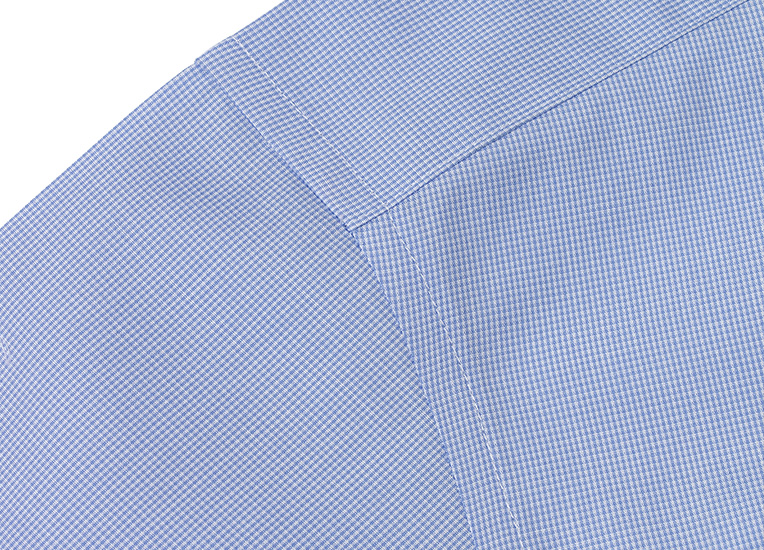
And, as a shirt-wearer, I have a particular horror of labels that scratch the back of my neck! So ours have to be made so you can’t feel them.
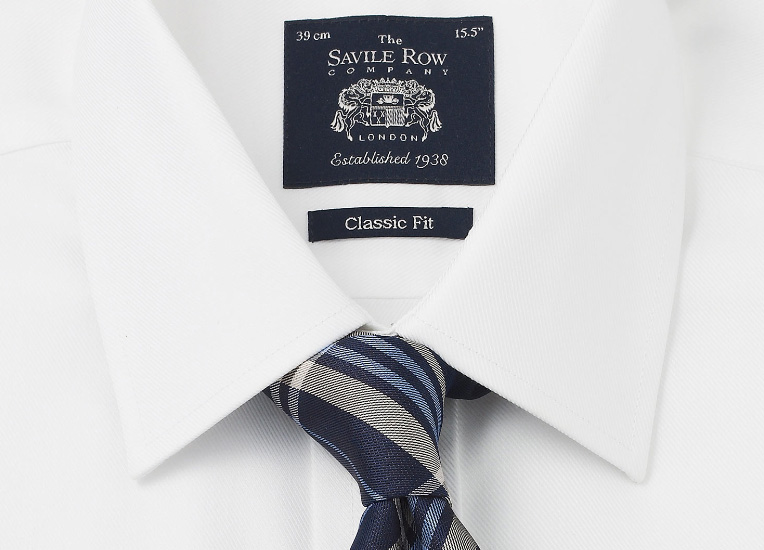
On the subject of the minutiae… buttons must be secure and button holes must be perfectly neat. No stray threads. Ever.
And customers must have as many options to personalise as possible. So I think we’re unique as online shirt retailers in offering not just sleeve length alterations, but also monogramming, choice of button thread colour and even the option to add a pocket.
Last question. Which is your favourite shirt in the Spring 2015 collection?
I guess that has to be one of the pure white herringbones. There are three of them this season: classic, luxury classic and extra slim fit.
I love the silky feel of these shirts: so soft, with a lovely touch of lustre. And for sheer versatility you simply can’t beat a sharp white shirt: it goes perfectly with all your suits and the vast majority of your ties.
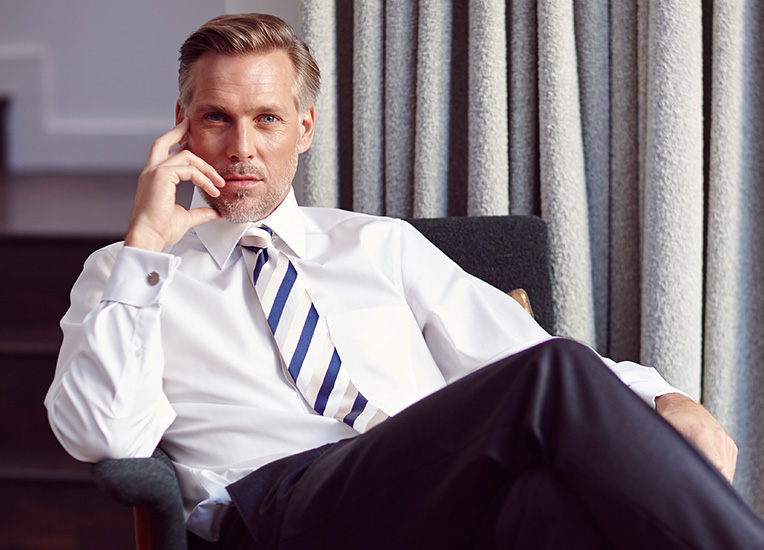
Next time, I’ll be chatting to Jeffrey about Savile Row Suits – there’s some exciting news on the horizon so keep an eye out!




